Tiendas Departamentales Lotte (Casa Central) (롯데백화점 본점)
1.0Km 6912 2024-05-17
Namdaemun-ro 81, Jung-gu, Seúl.
Myth Jokbal Myeongdong(미쓰족발 명동)
1.0Km 87 2020-10-30
1F, 21, Myeongdong, 3-gil, Jung-gu, Seoul
+82-2-3789-8799
A pig's trotter(s) specialty restaurant located in Myeong-dong, Seoul. A Korean store specializing in jokbal (pig's trotter) for over 30 years now. This restaurant's signature menu is braised pigs'' feet.
PALSAIK Samgyeopsal Myeongdong(팔색삼겹살 명동)
1.0Km 98 2020-10-30
2F, 21, Myeongdong, 3-gil, Jung-gu, Seoul
+82-2-3789-8292
It provides eight different flavors of pork belly. The most famous menu is grilled pork belly. A barbecue specialty restaurant located in Myeong-dong, Seoul.
Eunaenjeong Myeong-dong Dakgalbi (은앤정명동닭갈비)
1.0Km 166 2021-03-19
19, Myeongdong 7-gil, Jung-gu, Seoul
+82-2-778-1988
A place that sells dakgalbi (Spicy stir-fried chicken) or spicy chicken fried in a large pan loved by Koreans. This Korean dishes restaurant is located in Jung-gu, Seoul. The representative menu is spicy stir-fried chicken with cheese.
Ogu Banjeom (오구반점)
1.0Km 77 2021-03-29
60, Supyo-ro, Jung-gu, Seoul
+82-2-2267-0516
It is a store that has been in operation since 1953. This Chinese (cuisine) restaurant is located in Jung-gu, Seoul. The most famous menu is pan-fried dumpling.
Inwoohouse [Korea Quality] / 인우하우스 [한국관광 품질인증]
1.0Km 34542 2023-04-13
9, Gyedong 6-gil, Jongno-gu, Seoul
02-742-1115
Run by a couple hailing from Bukchon, Inwoo House is located in an alleyway in Gye-dong, Jongno-gu, which is part of Bukchon that is well-known for old hanok houses. Inwoo House, meaning 'the house of Inwoo,' is inhabited by the owner couple and eight-year-old son Inwoo and his younger brother Yeonwoo. The couple, who have always lived in Bukchon, moved to Inwoo House in 2010; their parents run another guesthouse -- Yeonwoo House -- in Gahoe-dong, which isn’t far from Inwoo House. These two hanok guesthouses seek to provide guests with an opportunity to experience the true aspect of traditional Korean house amid the natural environment. Inwoo House, which has the typical style of hanok in the area, features a cozy yard, a toenmaru (narrow wooden porch running along the outside of the building), and several charming decorative items. It has three rooms – Tokki-bang and Haejanggeum-bang situated in Sarangchae (a detached building) and Nori-bang, which is a communal space. Due to its quiet location, guests can enjoy relaxation with a serene atmosphere in their rooms, which are decorated with calligraphic works and furniture inlaid with mother-of-pearl in a simple way. Each room is equipped with a bathroom. The guesthouse offers breakfast such as toast or tteokguk (rice cake soup). Inwoo House is an ideal place to stay for guests with children as the owner couple have children with whom children can play in the alley, yard, or toenmaru with an interesting hanok environment. The guesthouse also provides various traditional activities including traditional Korean clothes experience, traditional Hanji (Korean paper) craft experience, traditional knot bracelet making, and fan decorating, which are popular among foreign tourists and children. It is adjacent to restaurants, coffee shops, convenience store, and other tourist attractions including Gyeongbokgung Palace, Changdeokgung Palace, Insa-dong, and Samcheong-dong.
Dondwaeji (돈돼지)
1.1Km 91 2021-03-22
15, Myeongdong, 9-gil, Jung-gu, Seoul
+82-2-776-3301
A restaurant famous among not only Koreans but also foreign tourists. This restaurant's signature menu is grilled strip loin. This Korean dishes restaurant is located in Jung-gu, Seoul.
Ibis Ambassador Myeongdong (이비스 앰배서더 명동)
1.1Km 50073 2021-05-18
78, Namdaemun-ro, Jung-gu, Seoul
+82-2-6361-8888
Ibis Ambassador Myeongdong is located in the center of downtown Seoul in Myeong-dong, the heart of the city’s business and shopping district. Its location and reasonable rates make it a good choice for business travelers, and its proximity to the shopping district also attracts tourists. The hotel has a lobby on the building's highest floor, offering a panoramic view of the bustling city. All rooms are equipped with an LCD TV, personal safe, free Internet service, a spacious work desk, and a 24-hour reception service.
Myeong-dong Sotttukkeong (명동솥뚜껑)
1.1Km 163 2021-03-20
14-4, Myeongdong, 7-gil, Jung-gu, Seoul
+82-2-773-5076
A place where you can try both soups and grilled pork with kimchi, one of the representative dishes of Koreans. The best menu at this restaurant is grilled pork belly. This Korean dishes restaurant is located in Jung-gu, Seoul.
Palacio Changgyeonggung (창경궁)
1.1Km 21709 2023-09-13
Changgyeonggung-ro 185, Jongno-gu, Seúl.
El palacio Changgyeonggung de Seúl es uno de los palacios más especiales del período de la dinastía Joseon. El origen de este palacio proviene de la asunción del rey Sejong (1397-1450) en 1418. Una vez que fue coronado, mandó construir el palacio Suganggung para brindarle mayores comodidades al monarca anterior, Taejong (1367-1422), que había abdicado en su favor. El palacio Changgyeonggung fue degradado a Changgyeongwon, sede de jardín zoológico y botánico durante el período de la ocupación japonesa de Corea (1910-1945). En 1983, el zoológico fue trasladado y el palacio fue completamente restaurado volviendo a ser llamado Chaggyeonggung.
Pasando por la entrada principal al palacio, la puerta Honghwamun, se ve el puente Okcheongyo. Todos los palacios de la dinastía Joseon tienen estanques con un puente encima con forma de arco, tal como el puente Okcheongyo. Cruzando Okcheongyo, se pasa por la puerta Myeongjeongmun, y entonces, se halla el pabellón Myeongjeongjeon, que era la oficina del Rey. Además, Myeongjeongjeon es el pabellón más antiguo de su tipo de todos los palacios del período de Joseon. Normalmente, las construcciones de esta época se elevan mirando hacia el sur, pero Myeongjeongjeon mira hacia el este. Esto se debió a que los mausoleos de los anteriores monarcas se encontraban al sur y según las costumbres confucianas, no se permitían tener aperturas hacia la misma dirección. A uno y otro lado del patio se encuentran alineadas las piedras con los grabados que indicaban la jerarquía de los funcionarios oficiales.
Detrás de Myeongjeongjeon, hacia la izquierda y sobre un terreno más elevado se encuentra la sala Sungmundang. Esta sala fue construida aprovechando muy bien la pendiente de la geografía montañosa. Si se observa Myeongjeongjeon y Munjeongjeon, la combinación de las laderas montañosas y la línea de sus techos logran una armonía de gran belleza. Otro pabellón, Tongmyeongjeon, fue construido para la reina. Es la construcción más grande dentro del palacio Changgyeonggung, y en muchos lugares se notan detalles delicados de sus estructuras en atención a la reina. Andando por las rocas de Yanghwajeon después de pasar por Tongmyeongjeon, se llega a Jagyeongjeon. Y hacia el sudeste de Jagyeongjeon se encuentra Punggidae. Punggidae es un instrumento que servía para medir el viento. Se trata de una larga vara con un jirón de tela atada a una punta, y se la usaba para medir la velocidad y dirección del viento.
Dirigiéndose hacia el norte uno se encuentra con un enorme estanque denominado Chundangji. Originalmente, la mitad del estanque era utilizada por el mismo rey para cultivar arroz y aprender sobre agricultura. Pero durante la ocupación japonesa, transformaron el campo de arroz en estanque para hacer flotar pequeños botes sobre él. El jardín botánico creado en aquellos días sobre la parte superior del estanque permanece aún en la actualidad.
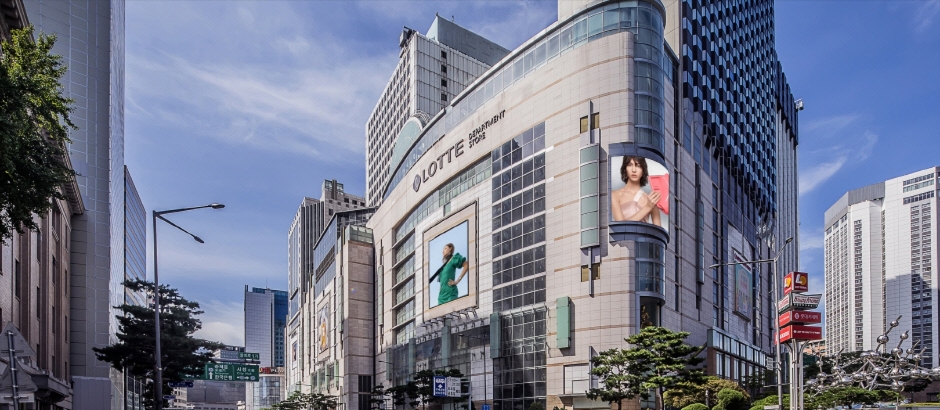
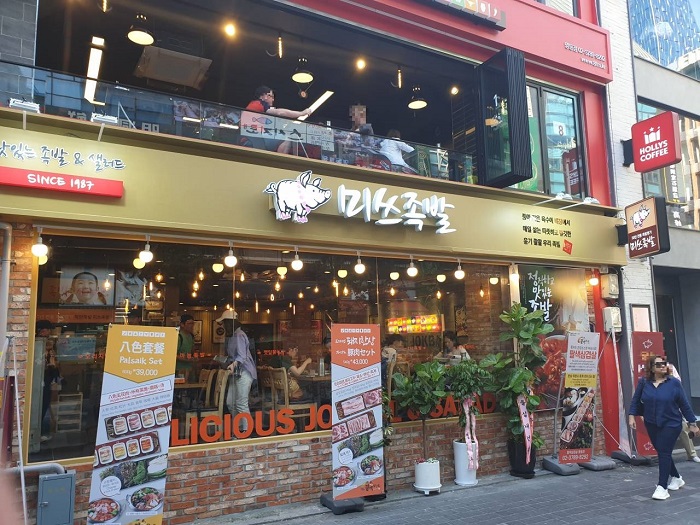
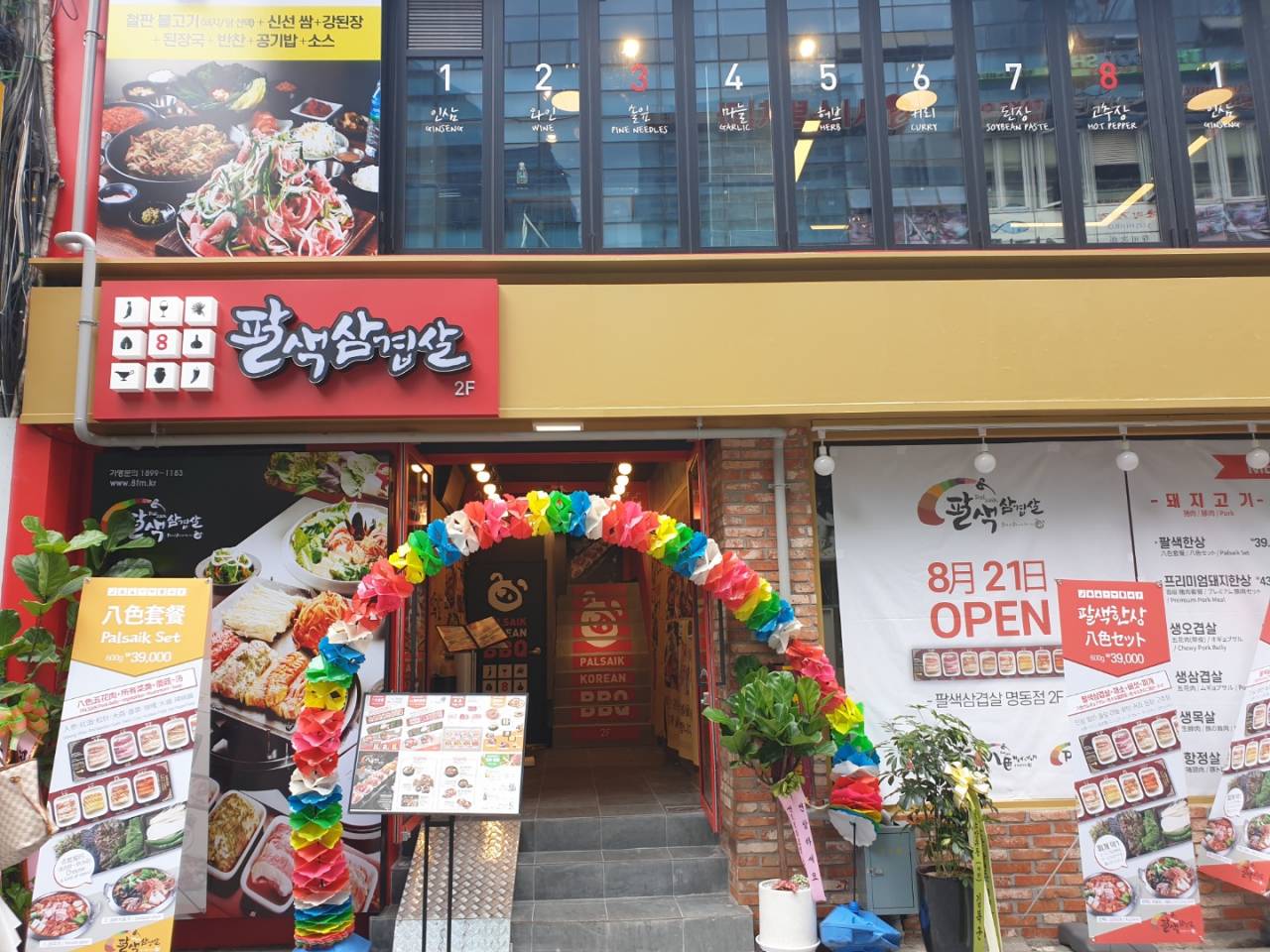
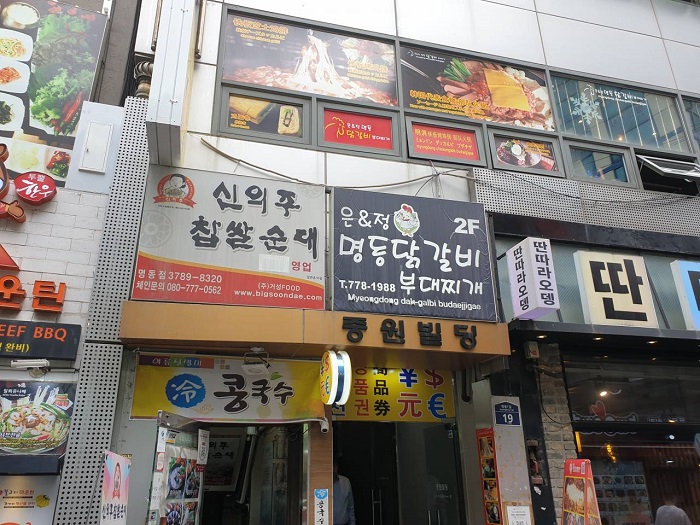
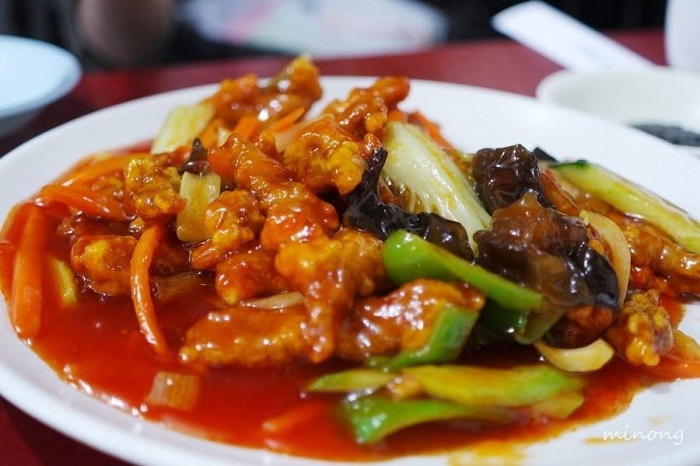
![Inwoohouse [Korea Quality] / 인우하우스 [한국관광 품질인증]](http://tong.visitkorea.or.kr/cms/resource/64/2633664_image2_1.jpg)
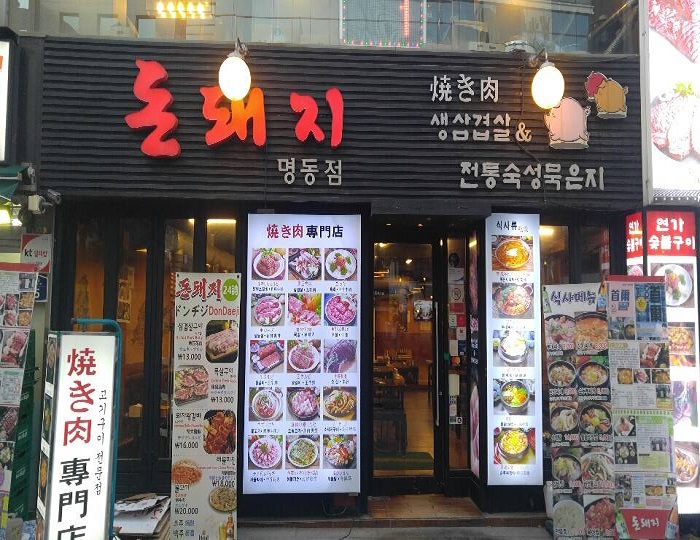

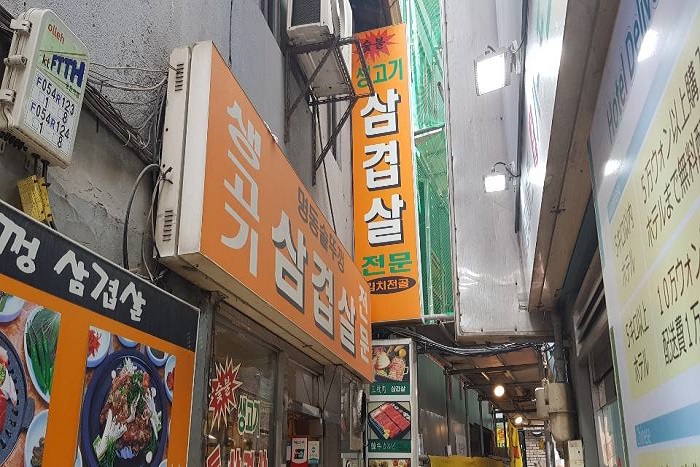
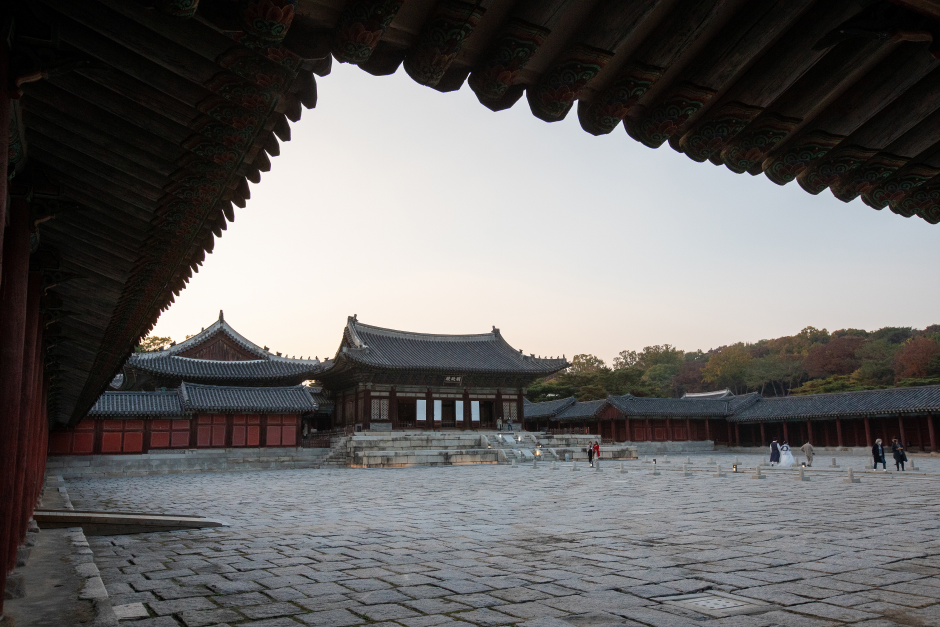
 Español
Español
 한국어
한국어 English
English 日本語
日本語 中文(简体)
中文(简体) Deutsch
Deutsch Français
Français Русский
Русский